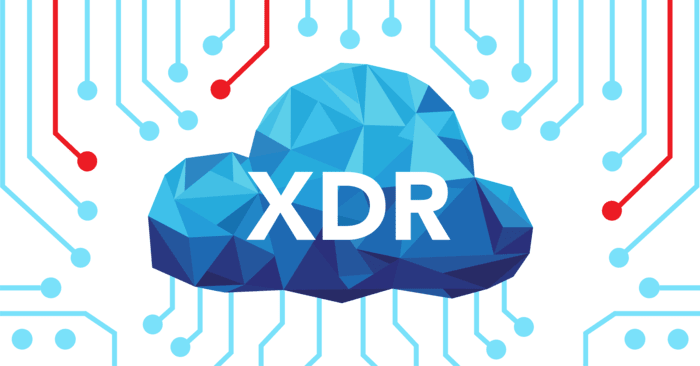The rise of sophisticated cyber threats, coupled with the complexity of IT environments, has made traditional security approaches ineffective. However, a new player in town is – Extended Detection and Response (XDR).
XDR is revolutionizing the enterprise security landscape by providing a unified platform that integrates multiple security technologies to detect and respond to threats more effectively. This technology differs from ITDR. What is Identity Threat Detection & Response (ITDR)? It is a crucial component dedicated to identifying and mitigating threats related to identity and access management.
Understanding XDR
Extended Detection and Response (XDR) is a comprehensive security solution that aggregates and correlates data from multiple security products and telemetry sources across the IT environment. This integration of data provides a more holistic view of the security landscape, allowing for a more robust defense against threats.
XDR transcends the capabilities of traditional endpoint detection and response (EDR) by incorporating telemetry and data analysis, advanced detection capabilities, and automated response actions. This means that not only does it monitor and analyze data, but it also proactively identifies potential threats and responds to them in real-time.
By centralizing security information and leveraging advanced analytics, XDR enables security teams to detect and respond to threats more efficiently. This efficiency reduces the time to detect and remediate incidents, thereby minimizing potential damage and downtime.
XDR’s automated response actions allow for swift containment of threats, reducing the burden on security teams and allowing them to focus on strategic security initiatives. The automation also reduces the likelihood of human error, further enhancing the security posture of the organization.
In essence, XDR is transforming the way organizations approach cybersecurity, making it a critical component in today’s ever-evolving threat landscape. Its comprehensive, integrated, and proactive approach is setting new standards in enterprise security management.
The Need for XDR in Enterprises
The pressure to safeguard sensitive data is escalating, given the increasing regulatory requirements and the high stakes associated with data breaches. The task of managing a variety of security tools, each with its unique capabilities and interfaces, adds to the complexity of the security landscape. The sheer volume of security alerts and data that need to be processed can be overwhelming, leading to alert fatigue and the risk of missing critical threats.
Compounding these challenges are the cybercriminals who are continually evolving their tactics. They exploit vulnerabilities in traditional security controls and employ sophisticated techniques to evade detection, making it increasingly difficult for enterprises to protect their IT environments.
Extended Detection and Response (XDR) emerges as a comprehensive solution. XDR addresses these challenges head-on by providing enhanced visibility across the entire IT environment. It aggregates and correlates data from multiple security products, enabling security teams to have a unified view of their security posture.
XDR’s advanced detection capabilities allow for the identification of threats that would typically evade traditional security controls. It uses advanced analytics and machine learning to detect anomalous behavior and potential threats, thereby reducing the chances of a successful cyber attack.
How XDR is Making a Difference
Extended Detection and Response (XDR) is indeed revolutionizing the enterprise security landscape. It provides a centralized platform that allows for proactive threat detection and response, a critical capability in today’s complex and dynamic cyber environment. XDR achieves this by aggregating and correlating data from a multitude of sources, including endpoints, networks, cloud environments, and applications. This comprehensive data collection and analysis give security teams a panoramic view of their organization’s security posture.
This holistic perspective is a game-changer. It empowers security teams to identify and prioritize threats with greater precision and speed. They can respond to real-time incidents more effectively, ensuring swift action is taken to neutralize threats.
XDR’s ability to orchestrate automated response actions is a significant advantage. It allows for the containment and mitigation of threats before they escalate, enhancing the organization’s resilience against cyber attacks.
Its platform simplifies the security management process. It eliminates the need for multiple, disparate security tools, reducing complexity and improving operational efficiency. The automation provided by XDR reduces the burden on security personnel, allowing them to focus on strategic security initiatives rather than routine tasks.
Advantages Example
Real-world examples indeed provide compelling evidence of the tangible benefits of Extended Detection and Response (XDR) in enhancing enterprise security. Consider the case of a global financial institution that was grappling with advanced threats targeting its network infrastructure.
The institution turned to XDR as a solution, leveraging its advanced detection capabilities and automated response actions. This strategic move paid off. The organization was able to detect and neutralize sophisticated attacks in real time, effectively preventing data breaches and averting potential financial losses.
Similarly, a healthcare provider faced the challenge of safeguarding patient data, a task made all the more critical due to stringent regulatory requirements. The provider deployed XDR to bolster its security measures. The result was a significant enhancement in visibility and control over security threats across its distributed environment. The provider could now better protect sensitive patient data and ensure compliance with regulatory requirements, demonstrating the versatility of XDR in addressing industry-specific security needs.
For The End
In the face of escalating cyber threats and complex IT environments, traditional security measures are falling short. Enter Extended Detection and Response (XDR), a game-changer in the realm of cybersecurity.
XDR is a comprehensive security solution that integrates multiple security technologies to provide a robust defense against threats. It offers a holistic view of the security landscape by aggregating and correlating data from various sources across the IT environment.
XDR goes beyond traditional endpoint detection and response (EDR) by not only monitoring and analyzing data but also proactively identifying potential threats and responding in real time. This centralization of security information and advanced analytics enables security teams to detect and respond to threats more efficiently, thereby minimizing potential damage and downtime.


